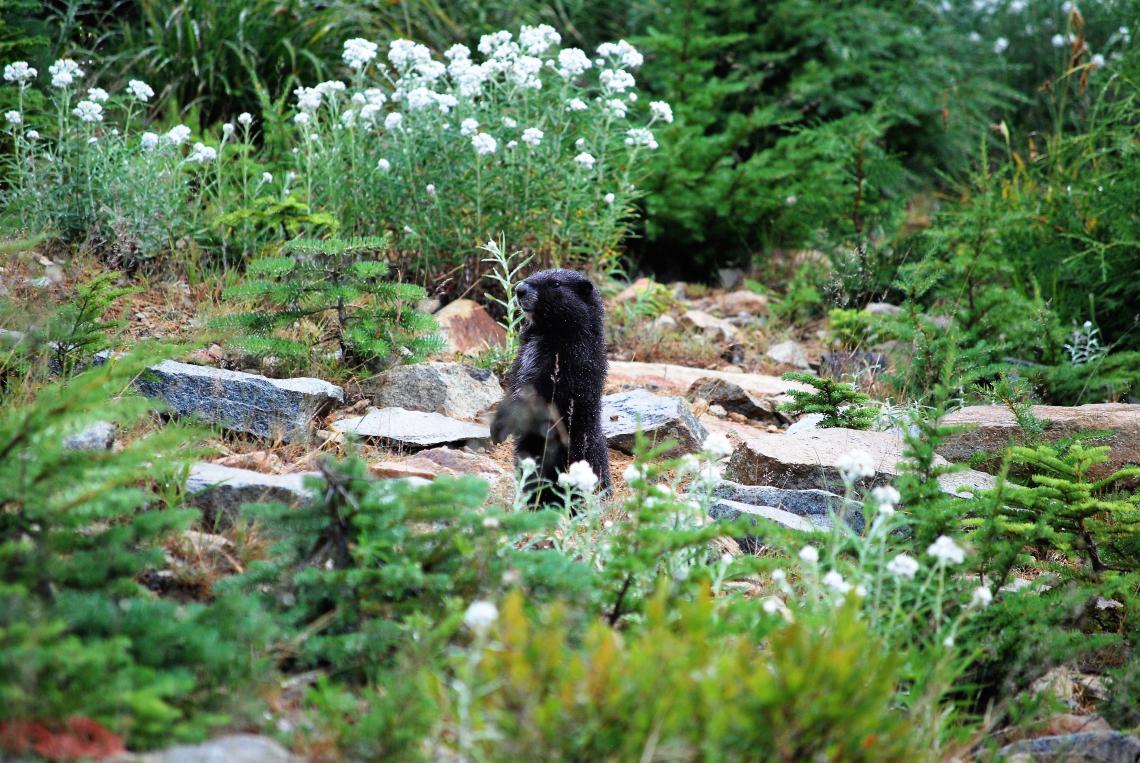
October 9, 2018 - 3:30pm
What consequences are there to a species when it is on the brink of extinction, then re-populated through captive breeding? This question is one Vancouver Island University (VIU) Biology Professor Dr. Jamie Gorrell is at the forefront of discovering an answer to through his research with the Island marmot population.
“By studying the success of reintroductions we will learn how captive-bred individuals alter the ecological and genetic structure of wild populations,” says Gorrell.
“This may have large implications, not just for marmots, but for all endangered species in need of captive breeding.”

On Tuesday, October 9, he was awarded a 2018 NSERC Discovery Grantto expand his research on the endangered Vancouver Island marmot population.
“This grant will give me the opportunity to expand this research, which would otherwise be impossible without this kind of support,” says Gorrell. “I was successful in obtaining funding because NSERC saw the potential for this project to be extremely valuable in helping to conserve other endangered species in the future.”
Gorrell was awarded $24,000 per year for five years through NSERC’s Discovery Grant program to support his research about inbreeding, genetic rescue and the consequences of captive breeding in endangered species.
“More species are declining and becoming endangered every year, yet we still have a lot to learn about how to save species from extinction or even how to maintain their genetic integrity in captivity while we fix the issues that are causing their decline in the natural environment,” says Gorrell.
He hopes to discover solutions to those issues by studying the genetic diversity and reintroduction results of the Vancouver Island marmot population.
The Vancouver Island marmot (VIM) is one of the most endangered mammals in the world. By 2003, their population was reduced to only 30 wild marmots. This drastic decline in the species population initiated a captive breeding program, and from 2004-2017, 501 captive-bred marmots have been reintroduced into the wild, resulting in a successful population recovery.
“While we cannot create new diversity, we can conserve what is left and prevent future loss,” says Gorrell. “We can do this by making sure all marmots get a chance to breed and pass along their genetic material.”

Gorrell aims to conduct genomic sequencing of marmots to determine the level of genetic diversity remaining in the wild and captive populations to help manage and conserve this species. A previous study showed little genetic diversity in Vancouver Island marmots. However, with new technology Gorrell and his research team have identified additional genetic markers to measure diversity and have begun sequencing both wild and captive animals.
“Our hope is to discover that marmots still retain more diversity than previously estimated, but if not, then we will have better research to identify even slight differences between individuals,” he says.
By understanding each marmot’s unique genetic profile, researchers can determine if reduced genetic diversity leads to lower survival or reproduction, determine if marmots are inbreeding and how this affects the survival of their pups, and provide further information when deciding breeding pairs to maximize genetic diversity.
Gorrell is one of two VIU faculty to receive a 2018 NSERC Discovery Grant. CRC Research Chair Dr. Timonthy Green also received a grant to support his research identifying the antiviral responses of oysters to mitigate disease in aquaculture.
Read the NSERC media release here.
-30-
MEDIA CONTACT:
Rae-Anne Guenther, Communications Officer, Vancouver Island University
P: 250.741.6673 | C: 250.619.1088 | E: Communications@viu.ca | T: @VIUNews
Tags: Biology | NSERC | Research | Teaching and Learning






